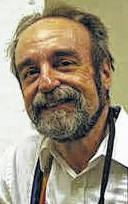
Learning to use a telescope is more than inputting some numbers into a tracking system and letting the telescope do all the work.
M35 is the 35th object in Charles Messier’s catalog of fuzzy things. Messier was searching for comets and got annoyed with all the patches of light that were not comets but looked like them. He created a list of these “non-stellar” objects.
The credit for M35’s discovery goes to Philippe Loys de Cheseaux in 1745-46. Using a small telescope, he saw a hazy patch that did look like a comet. By 1864, telescope technology had improved enough that Messier resolved it into a “cluster of very small stars.” Today, a beginner’s telescope reveals about a dozen bright stars woven into a milky cloud of light.
M35 is several hundred stars crowded in a region about 22 light-years (130 trillion miles) wide. It is perhaps 3,000 light-years distant. The cluster was born only 175 million years ago, or so the Internet says, a snap of the fingers compared to our 5-billion-year-old sun.
Most of M35’s stars are hot and blue, suggesting they formed relatively recently from the enormous hydrogen cloud that gave them birth.
A few of the stars are yellow or orange. They are giant stars that have already reached maturity and beyond. Having lived a quick and violent life, they will soon perish.
And now, armed with knowledge, we return to our direct observation.
In the telescope, the star cluster looked at first like a fuzzball. We now know that the hazy patch consists of unresolved stars just barely beyond your eye’s ability to resolve them. Look slightly to the side of the patch and catch it out of the corner of your eye. (Astronomers call this technique “averted vision.”)
Slowly, as your eye adapts, more and more faint stars will pop out of the haze. You might see as many as 50 stars in one of the sky’s most stunning views.
Further examination will reveal even more. As your reading suggested, you’ll notice that most of the stars have a slightly bluish cast. A few look distinctly red or orange. That simple piece of information allows us to estimate the cluster’s age.
Young stars exist in clusters because they are born out of enormous gas and dust clouds called nebulae. Stars are balls of exploding hydrogen that condense by gravity from a given cloud.
The stars in a cluster often formed within a few million years of one another as the denser parts of the cloud collapsed into spinning balls.
A nebula starts tens of trillions of miles wide. The stars that form from it might look close to one another, but they are far enough apart not to be bound by one another’s gravity.
Eventually, the gravity of the other stars of the Milky Way will draw them apart. For now, they are still young enough to be hanging out close to the nest.
But how young? To find out, we must ferret out the evidence our observations provide. Newly born clusters still have vestiges of the gas that formed the stars surrounding them like a cocoon. Here, looking at an image of M35 taken with a large telescope is helpful.
No such gas is visible in M35, so it must be getting on in years. However, stars early in their lives tend to burn with a hot, blue flame, and blue stars dominate M35. Still, a few reddish stars are visible, and that’s a sign that some of its stars have reached old age.
We conclude that M35 is young but has developed past its infancy. Massive stars reach old age prematurely in a few tens of millions of years and cool to a rather tepid red. The number of red stars in M35 indicates it must be about 175 million years old, corresponding to the Jurassic period on Earth. A snap of the cosmic fingers ago, as dinosaurs ruled our planet, the gas of a nebula coalesced into a star cluster we call M35.
Learning to see is more than a trick of the eye. Only when you know what you are seeing and have learned the meaning hidden in starlight, only then will you be transported to distant worlds.
Tom Burns is the former director of the Perkins Observatory in Delaware.

